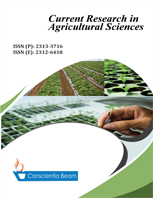Soil quality and vegetation identification in closed sand-gravel mining area in West Java, Indonesia
DOI:
https://doi.org/10.18488/cras.v11i2.3970Abstract
This paper examines the soil quality and vegetation identification in a closed sand gravel mining area in West Java, Indonesia. Revegetation of disturbed mining areas is crucial in restoring soil quality and environmental function. The native plants play a pivotal role in accelerating this process. The goal of this mixed-methods study in closed sand-gravel mining was to look at the nutrient profile, texture, and microbial count of the soil in two places in the foothills of a closed mine, as well as to find and name the plant species that naturally grow well and to find and name the plant species that naturally grow well when it rains. The observation showed that the soil near the spring was more fertile than the soil away from the spring, and the soil surrounding the spring supported a higher plant density. The study area supported the growth of 22 plants, including two trees, 13 shrubs, two sedges, four grasses, and one fern. Notably, two perennial trees–Mexican lilac and beech wood–were successfully grown during the initial greening program conducted three years ago. The bacterial and fungal counts for both soils were 109 colony-forming units (CFU) per g and 104 CFU/g, respectively. We found different morphology in the soil fungal colonies, while the bacteria colonies remained homogenous. The results underscore that the soil in the disturbed mine area still supported the native plant growth. These findings are crucial for the preservation of these native plants, making them crucial for the intensive revegetation of the mining area prior to the introduction of suitable perennial trees.

